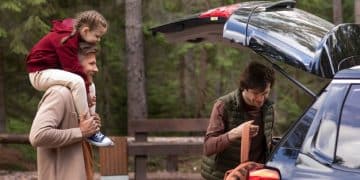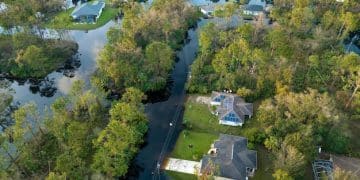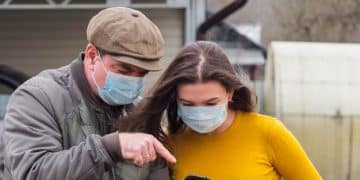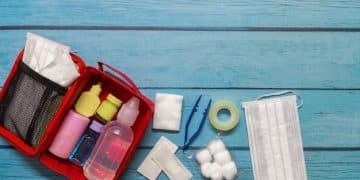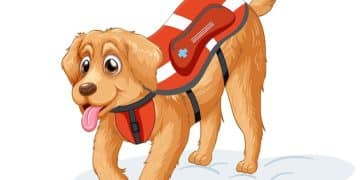Earthquake Preparedness: A Comprehensive Guide for US Families
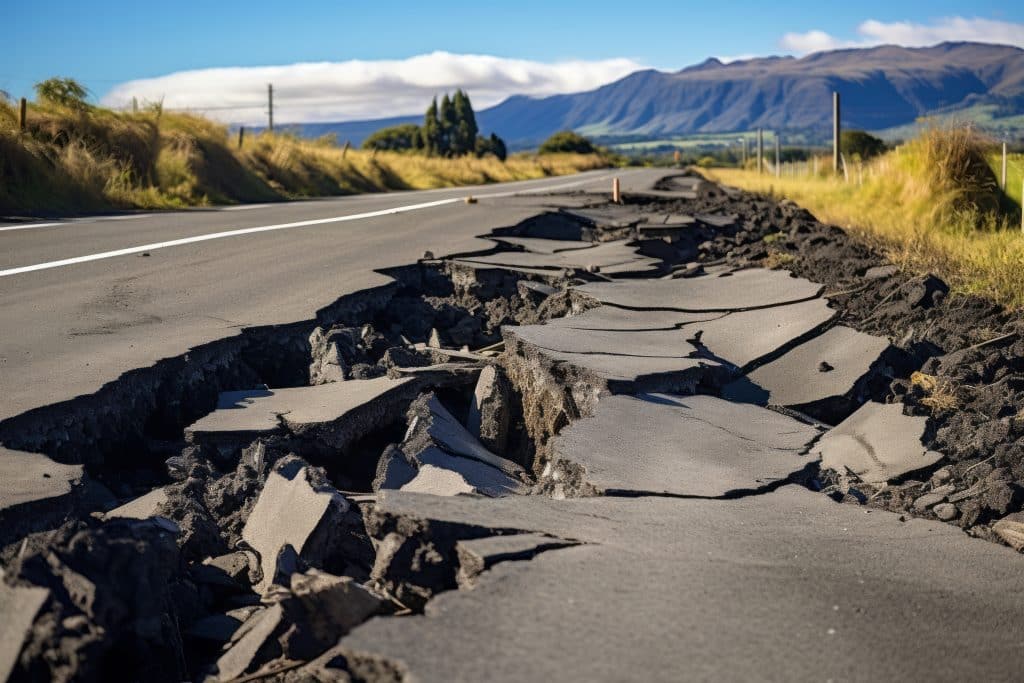
Disasters don’t come with warnings. Earthquake preparedness isn’t just an option; it’s a responsibility. Across the United States, families are waking up to the very real risks posed by seismic activity.
But being prepared isn’t about living in fear. It’s about taking smart, proactive steps to protect the people you love most.
In this comprehensive guide, we break down the essentials of earthquake preparedness into practical, mobile-friendly steps that every household can follow.
Safety starts with being informed.
🧭 Understanding Earthquake Risks in the US: A Critical Step in Earthquake Preparedness
One of the most essential parts of earthquake preparedness is understanding the seismic risks in your specific region.
The United States is geologically varied, and earthquake threats differ widely depending on location. Some areas face frequent and intense seismic activity, while others experience rare but potentially destructive quakes.
Recognizing these distinctions is key to building an effective family safety plan.
🏔️ West Coast: High Risk and Frequent Activity
States like California, Oregon, and Washington are located near major fault lines, including the well-known San Andreas Fault.
These areas experience frequent, high-magnitude earthquakes. Because of this, strict building codes, reinforced structures, and public safety education are common.
Families in these zones must prioritize earthquake preparedness at all levels, from home safety to evacuation planning.
🌾 Central US: Moderate Activity with High Consequences
The central United States, including states like Missouri and Oklahoma, is home to the New Madrid Seismic Zone. Earthquakes here are less frequent but can be extremely powerful.
Many communities are not fully equipped to handle a large seismic event, which increases the need for education, structural assessments, and family readiness plans.
🏙️ Eastern US: Infrequent but Potentially Damaging
Although earthquakes are less common in the eastern US, they can still be harmful due to older infrastructure. Past events, such as the 2011 Virginia earthquake, caused damage across multiple states.
These quakes can be felt over large areas, making earthquake preparedness important even in regions perceived as low-risk.
📊 Historical Earthquake Data Offers Valuable Insights
Analyzing historical earthquake data provides valuable insights into potential future events.
Records from the US Geological Survey (USGS) and other sources offer information on past earthquake locations, magnitudes, and impacts.
Studying this data can help families understand the potential severity of earthquakes in their region and inform their preparedness strategies.
- West Coast: High frequency and intensity, requiring robust building codes and preparedness plans.
- Central US: Moderate risk, with potential for large-scale events due to intraplate earthquakes.
- Eastern US: Lower frequency but potential for significant damage due to older infrastructure.
Understanding the specific earthquake risks in your region is the first step towards effective preparedness. Stay informed about local seismic activity and consult with experts to assess your family’s vulnerability.
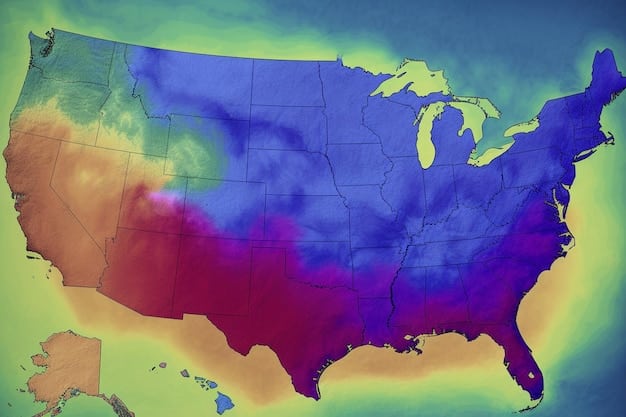
📝 Developing an Earthquake Preparedness Plan: Build a Family Strategy That Saves Lives
Having a detailed and well-practiced earthquake preparedness plan is one of the most important steps any household can take. A good plan helps ensure that every family member knows exactly what to do before, during, and after a quake.
It reduces confusion, speeds up response, and can ultimately save lives.
This plan should be simple, realistic, and tailored to your family’s needs. It should also be reviewed and practiced regularly so that every person, from children to older adults, feels confident about how to act when an earthquake strikes.
📞 Family Communication Strategy
One of the most critical parts of earthquake preparedness is establishing how your family will stay in touch if separated.
Choose a family member or trusted friend outside the affected region as your primary contact. In many cases, local phone networks become overwhelmed after a disaster, while long-distance calls and text messages still work.
Make sure each family member:
- Has the contact’s phone number saved and written down.
- Knows how to send a simple status message by text or app.
- Understands who to reach out to first if separated.
Print out an emergency contact sheet and keep copies in bags, wallets, and the emergency kit.
📍 Designated Meeting Points
In the chaos of an earthquake, having pre-planned meeting locations is vital. You need two types of meeting points:
Inside the home:
Choose a safe location like under a sturdy table or desk. Teach children how to “Drop, Cover, and Hold On” in that space.
Outside the home:
Select an open area away from trees, buildings, power lines, or glass. This will be your family’s regrouping point after the shaking stops and it’s safe to evacuate.
Rehearse reaching these locations regularly, especially with younger children or elderly family members. Familiarity builds calm and confidence in emergencies.
🧠 Why a Family Plan Matters
A well-thought-out earthquake preparedness plan provides structure during unpredictable moments. Instead of panicking or improvising under pressure, your family will have a clear set of steps to follow.
This not only increases physical safety but also reduces emotional stress during a high-tension situation.
Practice your plan. Talk through “what if” scenarios. Update your strategy when family routines or living situations change.
The more you rehearse, the better prepared you’ll be when the unexpected becomes reality.
🧰 Assembling an Emergency Earthquake Supply Kit: Be Ready When It Matters Most
A complete emergency kit is one of the most important tools in your earthquake preparedness strategy. After a quake, essential services may be unavailable for hours or even days.
Having supplies on hand can make all the difference in ensuring your family’s safety, comfort, and survival.
This kit should be accessible, clearly labeled, and able to sustain everyone in your household for at least 72 hours. The goal is to be self-sufficient when help is delayed.
📦 Water and Food Essentials
Include at least one gallon of water per person per day. This covers both drinking and basic hygiene. Store a three-day supply per person, more if possible.
Choose non-perishable, ready-to-eat food items. Canned goods, dried fruits, protein bars, and meal replacement shakes are excellent options.
Make sure to include a manual can opener, disposable utensils, and special dietary items if needed.
For families with babies or pets, remember to pack formula, baby food, and pet supplies as well.
🩹 First Aid and Medications
A well-stocked first aid kit should include adhesive bandages, antiseptic wipes, gauze, tweezers, pain relievers, and gloves. Add personal medications, extra inhalers, or insulin if needed. Write down essential health information in case of emergencies.
It’s helpful to include basic manuals or instructions in case someone without medical training needs to help.
🔦 Tools, Lighting, and Communication
Pack flashlights with extra batteries, glow sticks, and a headlamp if possible. A battery-powered or hand-crank radio is essential to receive emergency updates if internet and phone services go down.
A whistle can be used to signal for help if someone is trapped. Also include a multi-use tool or wrench to turn off gas lines if necessary.
😷 Personal Hygiene and Protection
Include dust masks, sanitizing wipes, tissues, feminine hygiene products, trash bags, and moist towelettes. These items help prevent infection and maintain basic comfort if water is limited.
📁 Documentation and Extras
Add copies of personal documents such as IDs, insurance policies, and emergency contact lists. Place these in a waterproof bag. You may also want to include cash in small bills and a local map in case GPS is unavailable.
Comfort items like blankets, warm clothing, a deck of cards, or books can also help reduce stress in emergency shelters.
🗃️ Where and How to Store Your Kit
Keep your emergency kit in a cool, dry, and easily accessible place such as a hall closet, garage, or entryway. Label it clearly so every family member knows where it is.
Review the contents every six months. Replace expired food, check battery levels, and update medications as needed.
Having a complete and maintained supply kit is a key part of responsible earthquake preparedness. When the ground shakes, this kit could be your family’s lifeline.
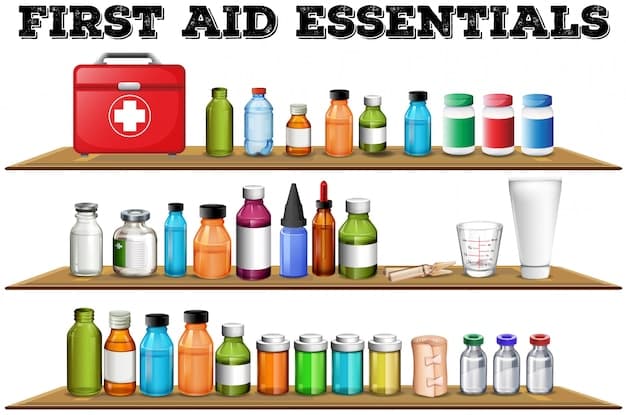
📝 Developing an Earthquake Preparedness Plan: Build a Family Strategy That Saves Lives
Having a detailed and well-practiced earthquake preparedness plan is one of the most important steps any household can take. A good plan helps ensure that every family member knows exactly what to do before, during, and after a quake. It reduces confusion, speeds up response, and can ultimately save lives.
This plan should be simple, realistic, and tailored to your family’s needs. It should also be reviewed and practiced regularly so that every person, from children to older adults, feels confident about how to act when an earthquake strikes.
📞 Family Communication Strategy
One of the most critical parts of earthquake preparedness is establishing how your family will stay in touch if separated.
Choose a family member or trusted friend outside the affected region as your primary contact. In many cases, local phone networks become overwhelmed after a disaster, while long-distance calls and text messages still work.
Make sure each family member:
- Has the contact’s phone number saved and written down.
- Knows how to send a simple status message by text or app.
- Understands who to reach out to first if separated.
Print out an emergency contact sheet and keep copies in bags, wallets, and the emergency kit.
📍 Designated Meeting Points
In the chaos of an earthquake, having pre-planned meeting locations is vital. You need two types of meeting points:
Inside the home:
Choose a safe location like under a sturdy table or desk. Teach children how to “Drop, Cover, and Hold On” in that space.
Outside the home:
Select an open area away from trees, buildings, power lines, or glass. This will be your family’s regrouping point after the shaking stops and it’s safe to evacuate.
Rehearse reaching these locations regularly, especially with younger children or elderly family members. Familiarity builds calm and confidence in emergencies.
🧠 Why a Family Plan Matters
A well-thought-out earthquake preparedness plan provides structure during unpredictable moments. Instead of panicking or improvising under pressure, your family will have a clear set of steps to follow.
This not only increases physical safety but also reduces emotional stress during a high-tension situation.
Practice your plan. Talk through “what if” scenarios. Update your strategy when family routines or living situations change. The more you rehearse, the better prepared you’ll be when the unexpected becomes reality.
👨👩👧👦 Educating Your Family on Earthquake Safety: A Core Pillar of Earthquake Preparedness
Creating emergency kits and securing your home are essential, mas nada substitui a preparação das pessoas que vivem com você.
Educating your family on earthquake safety is one of the most powerful ways to strengthen your overall earthquake preparedness plan.
Every member of your household, regardless of age, should know what to do before, during, and after an earthquake. When everyone understands the steps to take, responses become automatic and more effective under pressure.
🧠 Why Family Education Matters in Earthquake Preparedness
Knowledge reduces panic. When a quake hits, confusion can lead to poor decisions. Teaching safety procedures in advance builds confidence and ensures that children, seniors, and even visitors know how to act.
Families that practice together are more likely to stay safe, stay calm, and recover quickly. Including your children in these conversations also empowers them and lessens fear.
🧍♂️ Drop, Cover, and Hold On: The Golden Rule
One of the most recognized earthquake safety actions is the Drop, Cover, and Hold On technique. Practicing this regularly is a key part of earthquake preparedness at home and in schools.
Here’s how it works:
Drop to the ground to prevent being knocked over.
Cover yourself under a sturdy table or desk to protect from falling objects.
Hold on to the furniture until the shaking stops completely.
If no table is available, crouch next to an interior wall away from windows, cover your head and neck with your arms, and stay as low as possible until it’s safe to move.
🏡 Practicing Drills at Home
Practice safety drills at least once every few months. Vary the times and locations so your family can adapt to different scenarios, such as nighttime, while cooking, or when in separate rooms.
Make it engaging, especially for children. Turn it into a challenge or game that rewards correct actions. The more familiar the steps become, the less likely anyone will freeze or panic when a real earthquake occurs.
📋 Review and Reinforce Regularly
Review your earthquake preparedness plan together. Go over emergency contact numbers, evacuation routes, and where supplies are stored.
Ask questions during mealtime or before bed as gentle reminders. Make sure every member of the household, including caregivers and babysitters, understands the procedures.
💬 Build a Culture of Preparedness
The goal is to make earthquake preparedness a normal part of family life not a one-time conversation.
Keep emergency discussions age-appropriate but consistent. Repetition, reassurance, and practice help build muscle memory and resilience.
By educating your family on earthquake safety, you are equipping them with the tools to stay calm, act quickly, and protect themselves and others.
This simple but essential effort strengthens every layer of your earthquake preparedness strategy.
🚨 Post-Earthquake Safety and Recovery: A Vital Phase of Earthquake Preparedness

Surviving the initial tremor is just the beginning. The moments and days that follow an earthquake are often filled with hidden dangers and uncertainty.
That is why understanding post-earthquake safety and recovery is an essential part of effective earthquake preparedness.
From gas leaks to structural hazards and emotional shock, the aftermath can present a new set of risks that demand calm, informed action.
Knowing what to do after the shaking stops can help protect your family, stabilize your home, and support your community’s recovery.
🧱 Assessing Damage and Immediate Hazards
Once the ground stops shaking, take a moment to stay calm and gather your thoughts. Begin by carefully inspecting your surroundings for visible hazards and potential threats.
Look for cracks in walls, ceilings, or foundations. If you notice signs of serious structural damage, leave the building immediately. Never assume your home is safe without a proper assessment.
Check for gas leaks by smell or sound. If you detect gas or suspect a leak, evacuate the house and call the gas company from a safe distance. Do not use any electrical switches or open flames.
Be alert for fallen power lines or damaged utility poles outside. Stay far away and report them to local authorities.
Inspect for water line breaks, broken glass, and other hazards that could cause injuries. Use a flashlight, not candles, to prevent accidental fires.
🆘 Providing First Aid and Helping Others
After ensuring your immediate environment is safe, turn your attention to the people around you. Earthquake preparedness includes being ready to help those who may be injured or disoriented.
Check each family member for injuries. Administer basic first aid using supplies from your emergency kit. Treat cuts, bruises, and minor wounds with bandages and antiseptic. Keep injured areas clean to prevent infection.
If someone is seriously injured or unconscious, call emergency services as soon as possible. Do not attempt to move them unless they are in immediate danger from falling debris or fire.
Extend help to neighbors, especially the elderly or people with disabilities. Sharing resources and support during this phase strengthens your community’s resilience and recovery.
⚠️ Staying Alert for Aftershocks
Aftershocks are common and can occur minutes, hours, or even days after the main quake. These smaller quakes can cause additional damage to already weakened structures.
Stay outside and away from buildings if possible until authorities confirm it is safe to return indoors. If you must enter, do so cautiously and only for essentials.
Be prepared to repeat safety measures during aftershocks. Having a well-rehearsed earthquake preparedness plan helps you respond effectively to these recurring threats.
🔄 Starting the Recovery Process
Document any damage to your property for insurance purposes. Take photographs and notes of affected areas and belongings. Contact your insurance provider to begin claims as soon as you have stable access to phone or internet.
Prioritize emotional recovery too. Earthquakes can leave lasting psychological effects. Talk openly with family members, especially children, about what happened. Reassure them that safety measures are in place and help is available.
Stay tuned to official alerts via radio or mobile apps for information on shelters, medical stations, and local services.
🧩 A Critical Part of Earthquake Preparedness
The post-earthquake phase is where earthquake preparedness proves its real value. All the planning, supplies, and education come into play to help families move from survival to stability.
By knowing how to assess damage, care for injuries, and navigate the early stages of recovery, you turn a devastating event into something manageable and structured. Recovery begins with readiness.
| Key Point | Brief Description |
|---|---|
| 🗺️ Plan Ahead | Create a family communication and meeting strategy. |
| 📦 Emergency Kit | Assemble a 72-hour supply kit with essentials like water, food, and first aid. |
| 🏡 Secure Home | Anchor furniture and reinforce your home’s structure. |
| ✅ Educate Family | Practice “Drop, Cover, and Hold On” and review safety procedures. |
Frequently Asked Questions (FAQ)
▼
Establish an out-of-state contact and ensure everyone knows their information. Designate meeting points and practice communication methods in case of separation.
▼
Include water (one gallon per person per day), non-perishable food, a first aid kit, flashlight, batteries, radio, whistle, dust mask, wrench, can opener, and local maps.
▼
Anchor tall furniture to wall studs, reinforce your home’s foundation, and secure hazardous materials. Install flexible gas lines to prevent leaks.
▼
Drop to the ground, take cover under a sturdy table or desk, and hold on until the shaking stops. If no shelter is available, crouch against an interior wall.
▼
Assess for damage and hazards like gas leaks and downed power lines. Provide first aid to injured individuals and tune into emergency broadcasts for updates.
Earthquake Preparedness Is a Responsibility, Not an Option
Being ready for a natural disaster is not just about peace of mind. It is about saving lives.
For families living in the United States, especially in regions with moderate to high seismic activity, earthquake preparedness should be a household priority.
By understanding local risks, creating a clear family plan, assembling an emergency kit, securing your home, and educating every member of the household, you are taking meaningful steps toward real protection. These measures are simple but powerful.
Preparedness gives you control when everything else feels uncertain. The more you invest in earthquake preparedness now, the more resilient and confident your family will be when disaster strikes.
For additional guidance, explore The New York Times Wirecutter’s guide to earthquake tools for expert-recommended gear.
Also, learn how other countries are prioritizing readiness through national policies, such as France’s upcoming survival manual for every household, highlighted by The Guardian.
Stay informed. Stay equipped. Make earthquake preparedness a part of your everyday life.
Liked the article?
